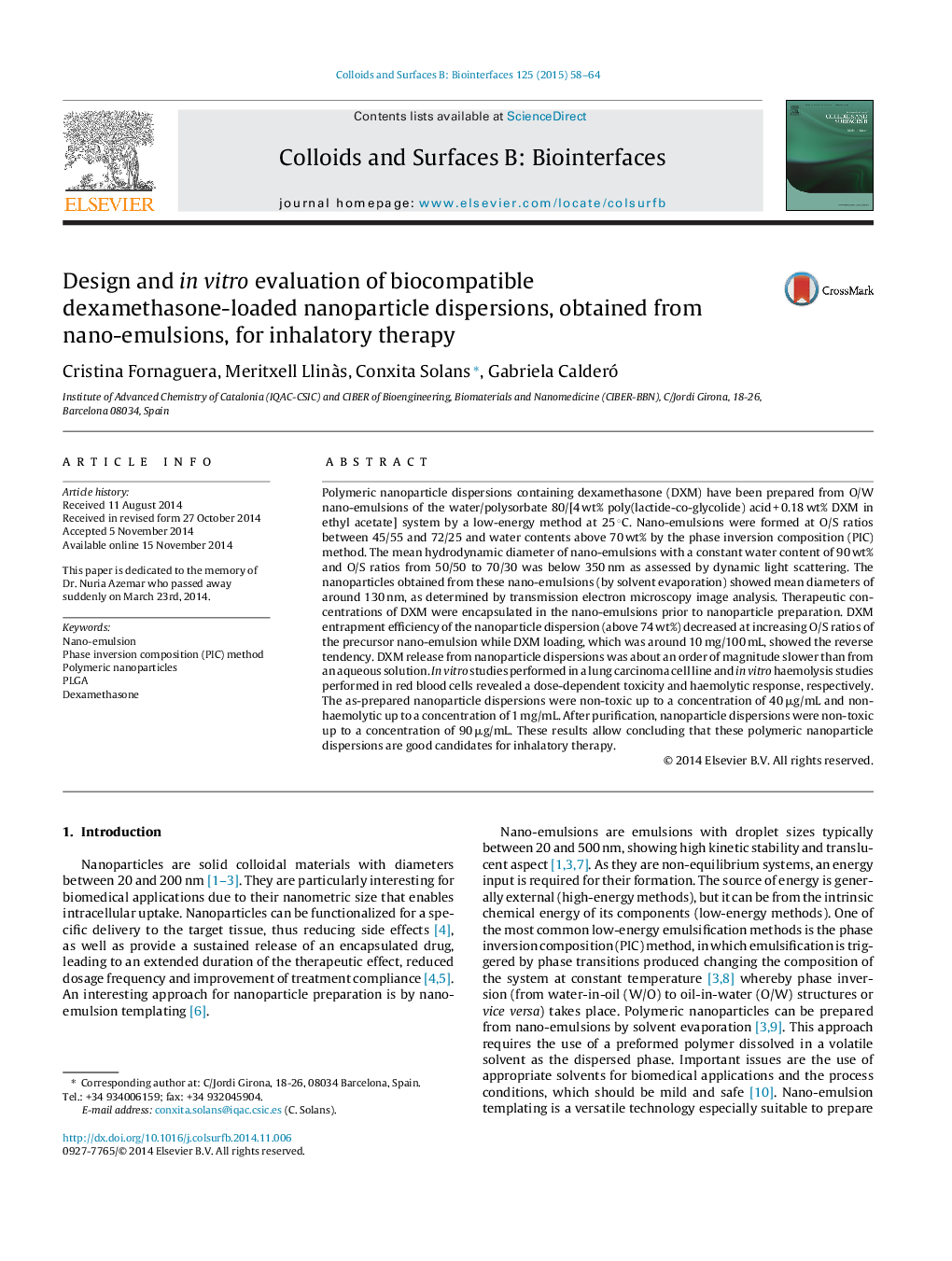| کد مقاله | کد نشریه | سال انتشار | مقاله انگلیسی | نسخه تمام متن |
|---|---|---|---|---|
| 599567 | 1454279 | 2015 | 7 صفحه PDF | دانلود رایگان |
• Polymeric nanoparticles were prepared from nano-emulsion templating, by a low-energy emulsification method followed by solvent evaporation.
• Encapsulation of therapeutic doses of dexamethasone inside nanoparticles and sustained drug release from the as-prepared nanoparticle dispersions.
• Dexamethasone-loaded nanoparticles are non-toxic and non-haemolytic at the required therapeutic concentrations.
Polymeric nanoparticle dispersions containing dexamethasone (DXM) have been prepared from O/W nano-emulsions of the water/polysorbate 80/[4 wt% poly(lactide-co-glycolide) acid + 0.18 wt% DXM in ethyl acetate] system by a low-energy method at 25 °C. Nano-emulsions were formed at O/S ratios between 45/55 and 72/25 and water contents above 70 wt% by the phase inversion composition (PIC) method. The mean hydrodynamic diameter of nano-emulsions with a constant water content of 90 wt% and O/S ratios from 50/50 to 70/30 was below 350 nm as assessed by dynamic light scattering. The nanoparticles obtained from these nano-emulsions (by solvent evaporation) showed mean diameters of around 130 nm, as determined by transmission electron microscopy image analysis. Therapeutic concentrations of DXM were encapsulated in the nano-emulsions prior to nanoparticle preparation. DXM entrapment efficiency of the nanoparticle dispersion (above 74 wt%) decreased at increasing O/S ratios of the precursor nano-emulsion while DXM loading, which was around 10 mg/100 mL, showed the reverse tendency. DXM release from nanoparticle dispersions was about an order of magnitude slower than from an aqueous solution. In vitro studies performed in a lung carcinoma cell line and in vitro haemolysis studies performed in red blood cells revealed a dose-dependent toxicity and haemolytic response, respectively. The as-prepared nanoparticle dispersions were non-toxic up to a concentration of 40 μg/mL and non-haemolytic up to a concentration of 1 mg/mL. After purification, nanoparticle dispersions were non-toxic up to a concentration of 90 μg/mL. These results allow concluding that these polymeric nanoparticle dispersions are good candidates for inhalatory therapy.
Figure optionsDownload as PowerPoint slide
Journal: Colloids and Surfaces B: Biointerfaces - Volume 125, 1 January 2015, Pages 58–64
